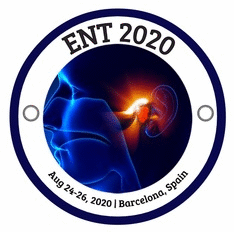
Candice Ansorge
MCU-FDTMF Dept. Of ORL-HNS, Philippines
Title: The Use of Bony Septum as an Extended Spreader Graft in Primary and Secondary Rhinoplasty
Biography
Biography: Candice Ansorge
Abstract
This study describes a surgical technique using bony septum, specifically vomer or perpendicular plate of the ethmoid (PPE), as an extended spreader graft (ESG) for securing septal extension graft (SEG) and for correcting internal nasal valve dysfunction. This is a a descriptive case series done in a tertiary private hospital. Thirty-two (32) patients who underwent aesthetic rhinoplasty from May 2016 to October 2017 were evaluated, and ten (10) patients presenting with symptomatic obstruction were considered for inclusion. The surgical technique was applied in patients with weak SEG for control of nasal length and tip projection who had inadequate septal cartilage for SEG and ESG intraoperatively. Results were evaluated grossly under direct vision intra-operatively and post-operatively to check the patency of the internal valve. Bony septum was used as an ESG in five (5) patients (1 male, 4 females, ages 35 to 50-years-old) with inadequate septal cartilage. Intraoperative evaluation under direct vision showed anterior caudal septal deviation in all 5 patients in whom correction was confirmed after placement of SEG and ESG. Immediate post-operative evaluation confirmed bilaterally patent nasal valve in all 5, who reported subjectively improved breathing at 2 and 4 weeks post-operatively. Post-operative photographs showed irmprovement of nasal length and tip. The use of the bony septum as ESG for rhinoplasty is a potentially effective means of supporting and securing the SEG for control of nasal length, preventing tip deviation or rotation and for improving internal valve function. Further trials are needed to establish its reliability and long-term effectivity.

